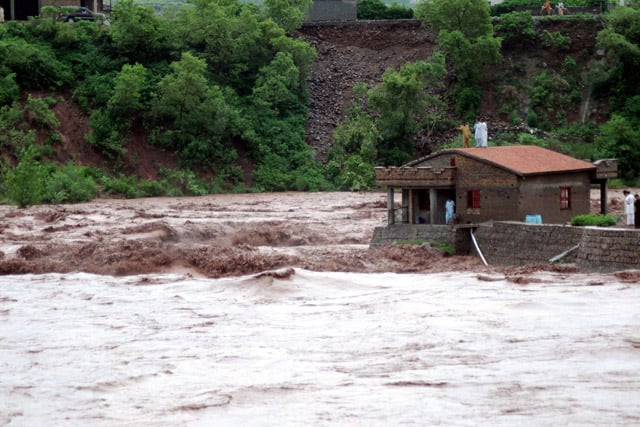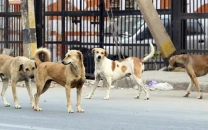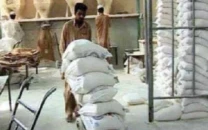Second wave enters Sindh
Floodwaters at Guddu and Sukkur barrages have reached high intensity once again.

According to the flood warning centre, the flood torrent in River Indus entered Sindh after assuming great intensity after being merged with the waters of eastern rivers. This has caused the water flow in Guddu and Sukkur barrages to swell beyond 1,000,000 cusecs.
As the gushing waters roar their way into the province, the low-lying areas of Jacobabad, Sukkur, Ghotki, Khairpur, Larkana, Benazirabad, Nausheroferoz and Hyderabad face the prospect of being inundated once again, complicating matters for the authorities.
With news of a new wave of flood, intense fear gripped Sukkur, Rohri and suburban areas. An irrigation official told Express on condition of anonymity that flood statistics are being shown on the lower side to avoid sending panic signals, “but the situation was dangerous”.
Meanwhile, commissioner of the Naseerabad Division of Balochistan, Sher Khan Bazai told reporters in his office that new floods coming from Sindh had lashed Dera Allah Yar, inundating 3,200 villages and rendering 25,000 homeless.
Following a massive canal breach that had inundated areas outside Jacobabad early on Saturday, officials of the Sindh Irrigation Department diverted the water from these canals towards Jaffarabad. A huge portion of the railway track was washed away, disrupting train service between Quetta and the rest of Pakistan. According to an official, it may take four to five days before the track is repaired. The communication system of the entire district of Jaffarabad was disrupted.
“Ten small boats of the Pakistan Army are engaged in relief work in Dera Allah Yar and are shifting marooned people to safer places,” he said, adding that more than 0.7 million people had taken shelter in different parts of Balochistan.
He said that the Provincial Disaster Management Authority (PDMA) had sent 25 metric tons of rations and cooked food for 12,000 people. “The administration is working to set up 20 water filtration plants to provide clean drinking water to flood survivors, but we need more food and international organisations must assist further,” he said.
Earlier, the Sukkur district administration had decided to cut the Noor Wah embankment in a move to save Jacobabad city and the Shahbaz Airbase.
Receiving directives from Ijaz Jakhrani, the federal sports minister who hails from Jacobabad, the water was to be diverted to the kachcha areas of Garhi Khairo. The diversion would have saved Jacobabad but flooded Jaffarabad in Balochistan. Former prime minister Mir Zafarullah Khan Jamali strongly objected to this decision and, reportedly accompanied by armed men and the DCO and DPO of Jaffarabad, disallowed the move.
Following cuts in the Tori and Ghouspur embankments eight days ago, water had entered Noor Wah, which is half a kilometre from Shahbaz Airbase and two kilometres from Jacobabad town. It encompassed hundreds of villages and inundated ready crops standing on hundreds of acres. A course for the flow of this water was made, keeping it seven miles away from the city while it covered 50 villages nearby.
ADDITIONAL REPORTING BY SHAHZAD BALOCH & AFTAB BUKHARI
Published in The Express Tribune, August 15th, 2010.



















COMMENTS
Comments are moderated and generally will be posted if they are on-topic and not abusive.
For more information, please see our Comments FAQ